Becoming a first-time small pet owner is an exciting milestone. As a new pet parent, it’s important for me to be well-prepared and knowledgeable to provide the best care for my new furry friend. Whether it’s a cute hamster, a playful guinea pig, or a cuddly rabbit, these tips for first-time small pet owners will help ensure a smooth and fulfilling experience for both me and my new pet.
Key Takeaways:
- Choosing a pet that suits my lifestyle is crucial to ensure a harmonious relationship.
- Gathering all the necessary supplies before bringing my pet home is essential.
- Pet-proofing my home and creating a safe environment for my pet is a top priority.
- Establishing a routine and starting training early are key to my pet’s well-being.
- Consulting with a veterinarian for guidance on health care and regular check-ups is important.
Choose a Pet That Fits Your Lifestyle
Before bringing home a small pet, it’s crucial to select a pet that complements your lifestyle. Consider factors such as the amount of time you can devote to a pet, financial capability, indoor and outdoor space, and the support system available. Research different breeds and species, and consult with experts to make an informed decision about the right pet for you.
When choosing a pet, it’s important to evaluate your time commitment and energy level. Some pets, like dogs, require daily exercise and interaction, while others, like cats, are more independent. If you have a busy schedule, a low-maintenance pet like a fish or a reptile may be a better fit.
Financial capability is another crucial aspect to consider. Different pets come with different costs, including food, grooming, veterinary care, and supplies. Make sure you can comfortably afford the expenses associated with owning a particular pet before making a decision.
Your living situation also plays a significant role in selecting the right pet. If you live in an apartment or have limited indoor space, a smaller pet like a hamster or a guinea pig may be more suitable. On the other hand, if you have a spacious backyard, a dog or a rabbit could be a great choice.
Lastly, consider the support system available for your pet. If you travel frequently or have long work hours, you may need someone to take care of your pet in your absence. Additionally, some pets require more socialization and companionship, so it’s important to determine if you can provide the necessary attention or if you need assistance from other family members or a pet sitter.
By taking these factors into account, you can make an informed decision and choose a pet that fits seamlessly into your lifestyle.
“Choosing a pet that aligns with your lifestyle is crucial for a successful and happy pet-owner relationship. It ensures that both you and your pet will be able to meet each other’s needs and enjoy a fulfilling life together.”
Comparison of Small Pets
| Pet | Time Commitment | Financial Costs | Space Requirements | Socialization Needs |
|---|---|---|---|---|
| Dog | High | High | Medium to Large | High |
| Cat | Medium | Medium | Small to Medium | Medium |
| Hamster | Low | Low | Small | Low |
| Guinea Pig | Medium | Medium | Medium | Medium |
| Rabbit | Medium | Medium | Medium to Large | Medium |
Prepare Properly with Necessary Supplies
Gathering all the necessary supplies before bringing your small pet home is essential. By preparing in advance, you can ensure that your pet’s basic needs are met and create a welcoming environment for their arrival. Here are some of the necessary supplies you should have on hand:
- Collar and leash: A collar and leash are essential for taking your small pet on walks and ensuring their safety outdoors.
- Food and water bowls: Provide your small pet with dedicated bowls for their food and water, making it easier for them to eat and drink comfortably.
- Bed or crate: Your small pet needs a cozy and secure place to sleep and relax. Consider getting a bed or crate that suits their size and breed.
- Elimination tools: Whether you have a cat or a dog, you’ll need appropriate elimination tools such as a litter box or pee pads to facilitate their potty training.
- Toys: Keeping your small pet entertained is crucial for their well-being. Invest in a variety of toys that are suitable for their species and size, promoting physical and mental stimulation.
- Food appropriate for your pet’s needs: Different small pets have specific dietary requirements. Consult with a veterinarian or pet specialist to determine the right type of food for your pet’s health and nutritional needs.
Once you have gathered all the necessary supplies, it’s important to set them up in a designated area before your pet’s arrival. This area will serve as their safe and comfortable space, providing them with a sense of security in their new home.
Creating a Welcoming Environment
By preparing the necessary supplies and setting up a designated area, you can create a welcoming environment for your small pet. This allows them to settle in more easily and reduces stress during the transition period. Furthermore, having all the supplies ready ensures that you can promptly address your pet’s needs as soon as they come home.
| Supply | Description |
|---|---|
| Collar and leash | Provides security and enables outdoor activities. |
| Food and water bowls | Easily accessible containers for your pet’s food and water. |
| Bed or crate | A safe and comfortable space for your pet to rest. |
| Elimination tools | Enables effective potty training and cleanliness. |
| Toys | Provides mental and physical stimulation for your pet. |
| Food appropriate for your pet’s needs | Nutritionally balanced food tailored to your pet’s species and size. |
Create a Safe and Comfortable Environment
Ensuring a safe and comfortable environment for your new small pet is essential for their well-being. Here are some tips to pet-proof your home and create a designated space for your furry friend:
Pet-Proofing Your Home
To create a pet-proof home, it’s important to identify and secure any potential hazards. Here are some areas to pay attention to:
- Electrical cords: Keep them out of your pet’s reach or use cord protectors to prevent chewing.
- Toxic houseplants: Remove any plants that may be toxic to pets or keep them in an area inaccessible to your furry friend.
- Small items: Store away small objects that can be chewed or swallowed, such as coins, buttons, or small toys.
By taking these preventive measures, you can ensure a safe environment where your pet can explore without the risk of accidents or ingesting harmful substances.
Create Your Pet’s Space
Setting up a designated space for your pet is important for their comfort and sense of security. Here’s how you can create a welcoming environment:
- Crate: Provide a crate that is appropriately sized for your pet, allowing them to have their own safe and cozy space.
- Bed: Choose a comfortable bed or blanket for your pet to relax and sleep on.
- Toys: Offer a variety of toys to keep your pet mentally stimulated and entertained.
Placing their crate, bed, and toys in a quiet area of your home will allow your pet to have a space where they can retreat to when they need some alone time. It’s important to make sure this space is easily accessible and free from any potential hazards that may cause harm or discomfort.
| Pet-Proofing Tips | Create Your Pet’s Space |
|---|---|
| Secure electrical cords | Provide a crate |
| Remove toxic houseplants | Choose a comfortable bed |
| Store away small items | Offer a variety of toys |
Establish Routine and Training
Small pets thrive on routine, so it’s important to establish a consistent schedule for their daily activities. This routine not only provides structure and predictability for your pet but also helps with their overall well-being and behavior. In this section, we will explore the essential aspects of establishing a pet routine, including feeding, exercise, and sleep.
The Importance of Routine
A consistent routine helps small pets feel secure and know what to expect each day. It gives them a sense of stability and helps to reduce anxiety or stress. Additionally, a routine can make it easier for pet owners to manage their time and responsibilities, ensuring that the needs of their small pets are met in a timely manner.
When it comes to feeding, establishing a fixed schedule will help regulate your pet’s appetite and prevent overeating or underfeeding. Make sure to provide a balanced diet appropriate for your pet’s species and size. Consult with a veterinarian to determine the appropriate portion sizes and feeding frequency.
Exercise is crucial for the physical and mental well-being of small pets. Allocate time each day for play sessions and physical activities that match your pet’s energy level and species-specific needs. This will help them burn off excess energy, maintain a healthy weight, and prevent behavioral problems associated with boredom or inactivity.
Sleep is also an important part of your pet’s routine. Most small pets require several hours of sleep each day, and providing them with a quiet, comfortable sleeping area away from distractions is essential. Consider their natural sleep patterns and create a peaceful environment to ensure they get adequate rest.
The Training Process
Training is an integral part of pet ownership, and starting early is crucial to help your small pet learn basic commands and behaviors. Use positive reinforcement techniques like treats, praise, and rewards to encourage good behavior and discourage undesirable habits. Consistency and patience are key when training small pets, as they may have shorter attention spans compared to larger animals.
Focus on teaching your small pet essential commands such as sit, stay, and come. This will not only foster better communication but also enhance their safety and allow for more enjoyable interactions. Consider enrolling in obedience classes or hiring a professional trainer for more advanced training needs.
By establishing a routine and implementing consistent training, you can shape your small pet’s behavior and build a strong bond. Remember to practice patience, as training takes time and effort. With dedication and positive reinforcement, you will witness the progress and development of your small pet’s skills and obedience.
Conclusion
As a first-time small pet owner, it’s crucial to be well-prepared and informed in order to provide the best care for your new furry friend. By following these essential tips, you can ensure a smooth and fulfilling journey as you embark on this exciting milestone.
Firstly, it’s important to choose a pet that suits your lifestyle. Consider factors such as the amount of time and resources you can dedicate to a pet, as well as the available space in your home. Researching different breeds and species, and consulting with experts, will help you make an informed decision.
Secondly, gather all the necessary supplies before bringing your small pet home. From collars and leashes to food and water bowls, having these items ready will create a welcoming environment for your new companion. Additionally, pet-proofing your home and setting up a designated space for your pet will ensure their safety and comfort.
Establishing a routine for feeding, exercise, and sleep is crucial for the well-being of your small pet. This routine will also aid in the training process, which should be started early on. Positive reinforcement and consistency will help your pet learn basic commands and behaviors.
Lastly, make sure to consult with a veterinarian for guidance on health care and regular check-ups. Their expertise will ensure your pet’s overall well-being and address any specific needs or concerns.
By following these tips, you’ll be well-prepared to embark on a happy and fulfilling journey as a first-time small pet owner. Providing a loving and nurturing environment for your new furry friend will create a strong bond and a lifetime of cherished memories.
FAQ
How do I choose the right pet for my lifestyle?
Consider factors such as the amount of time you can devote to a pet, financial capability, indoor and outdoor space, and the support system available. Research different breeds and species, and consult with experts to make an informed decision about the right pet for you.
What supplies do I need for my small pet?
Some essential supplies include a collar and leash, food and water bowls, a bed or crate, elimination tools (litter box, pee pads), toys, and food appropriate for your pet’s needs. Make sure to have these supplies ready and set up in a designated area to welcome your new pet.
How do I pet-proof my home?
Secure any potential hazards, such as electrical cords, toxic houseplants, and small items that can be chewed or swallowed. Set up a designated space for your pet, including their crate, bed, and toys, where they can feel safe and comfortable as they acclimate to their new surroundings.
Do small pets need a routine?
Yes, small pets thrive on routine. Establish a consistent schedule for feeding, exercise, and sleep. This will help with potty training and overall behavior. Starting training early is also crucial to ensure your pet learns basic commands and behaviors. Positive reinforcement and consistency are key to successful training.
How can I provide the best care for my small pet?
Choose a pet that suits your lifestyle, gather the necessary supplies, create a safe environment, establish a routine, and provide training and socialization. Remember to consult with a veterinarian for guidance on health care and regular check-ups.


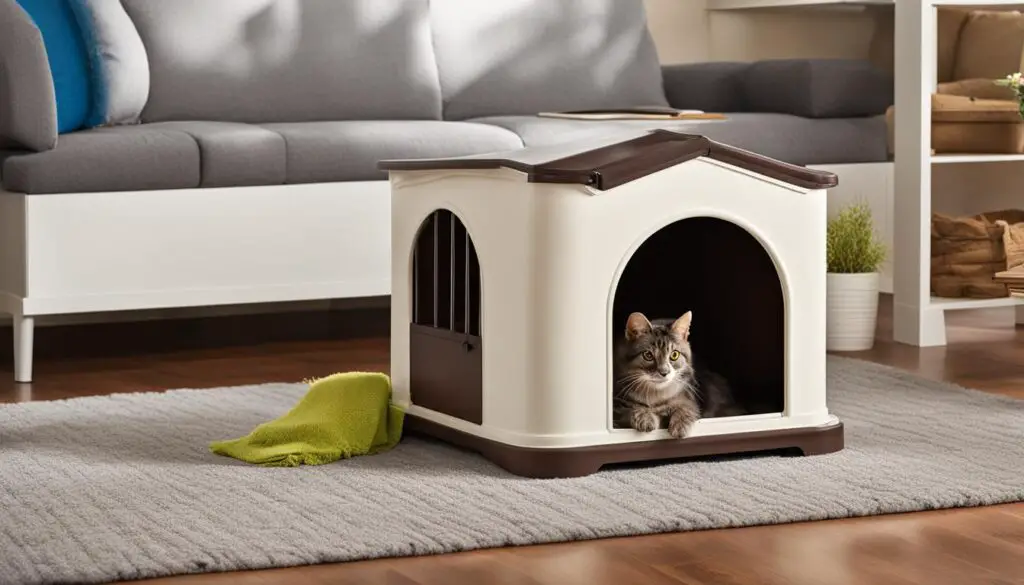
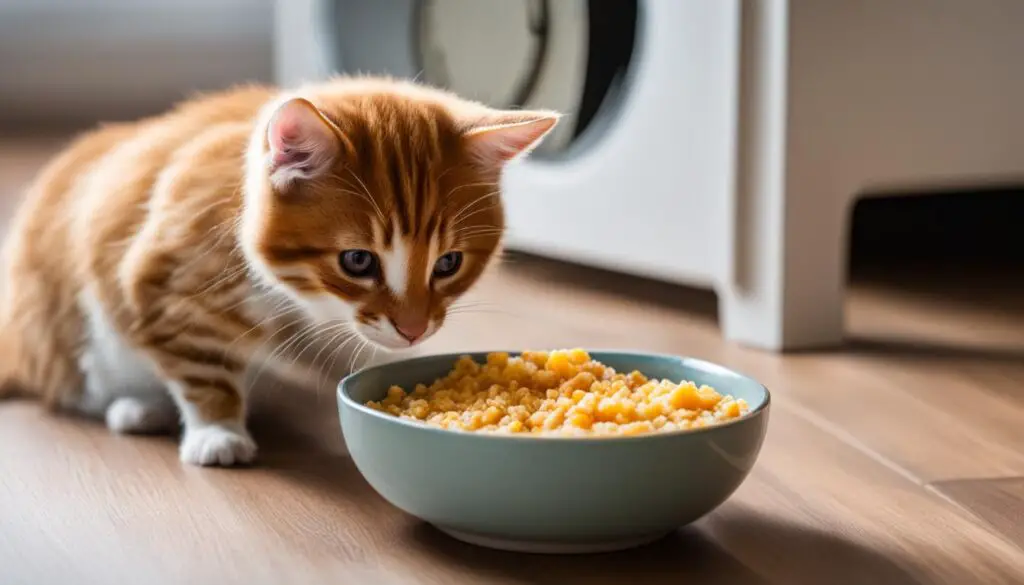
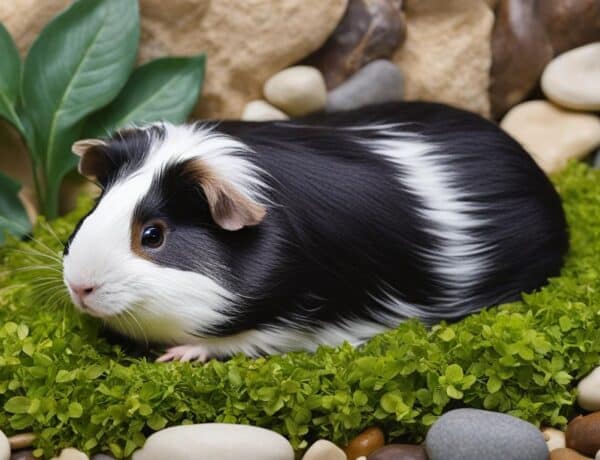
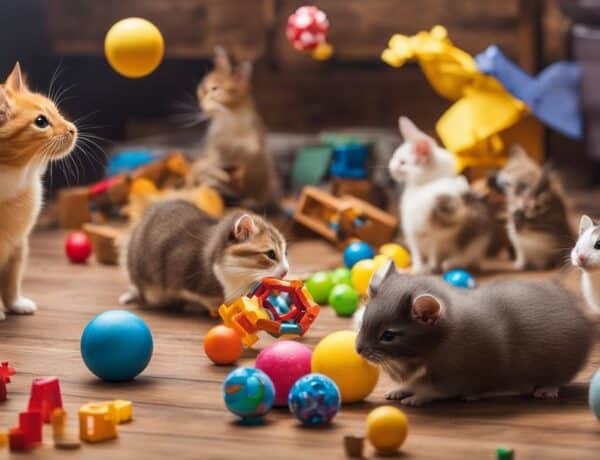
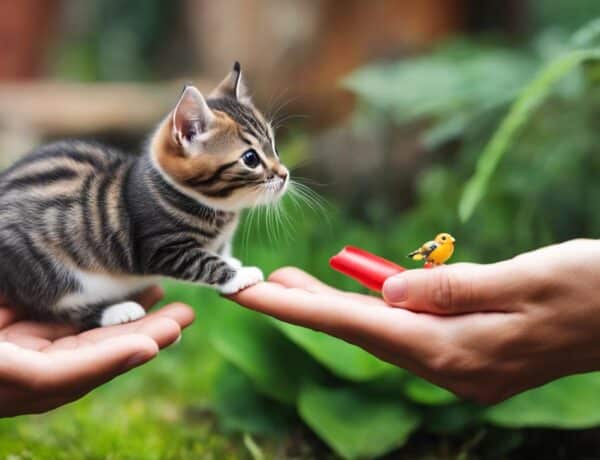
No Comments